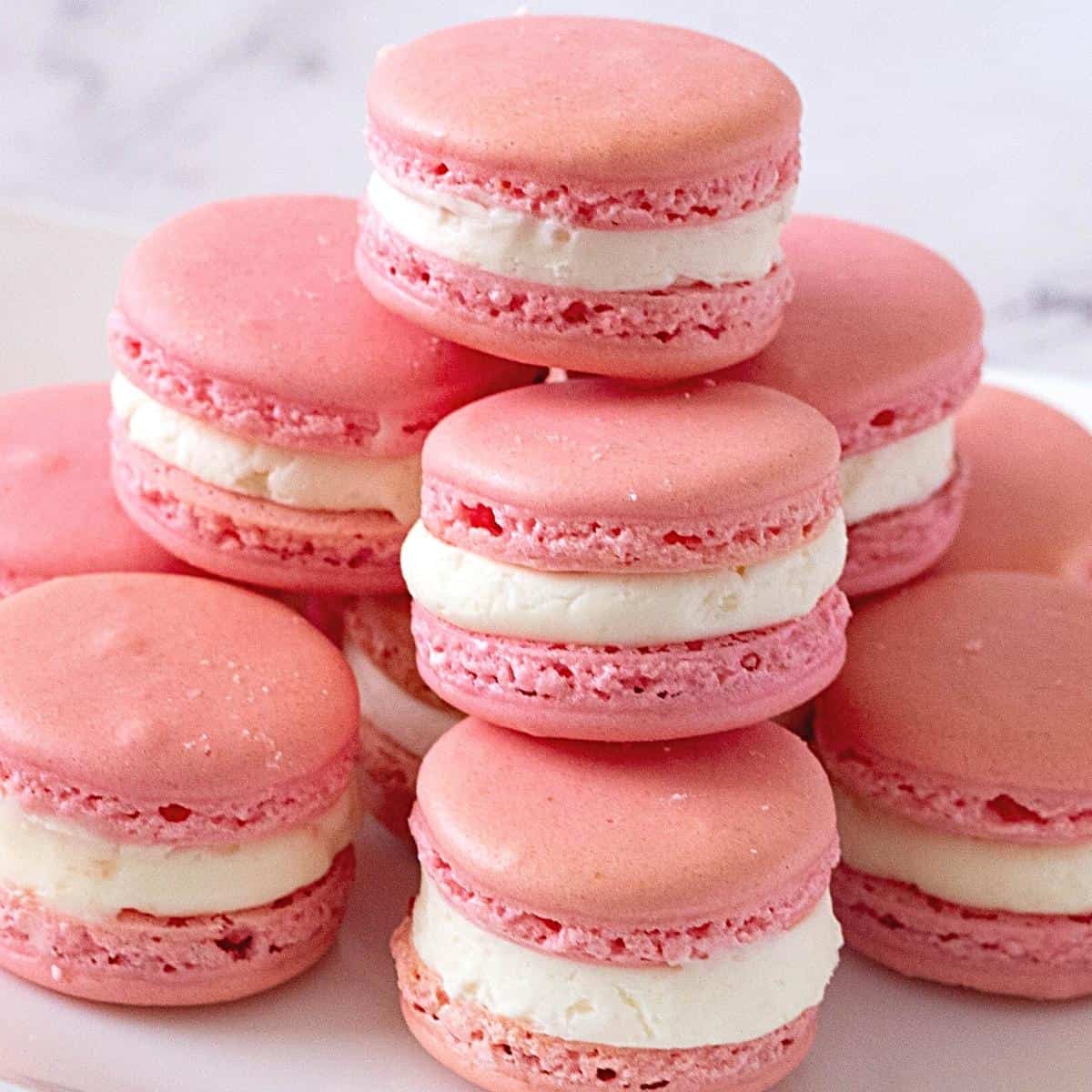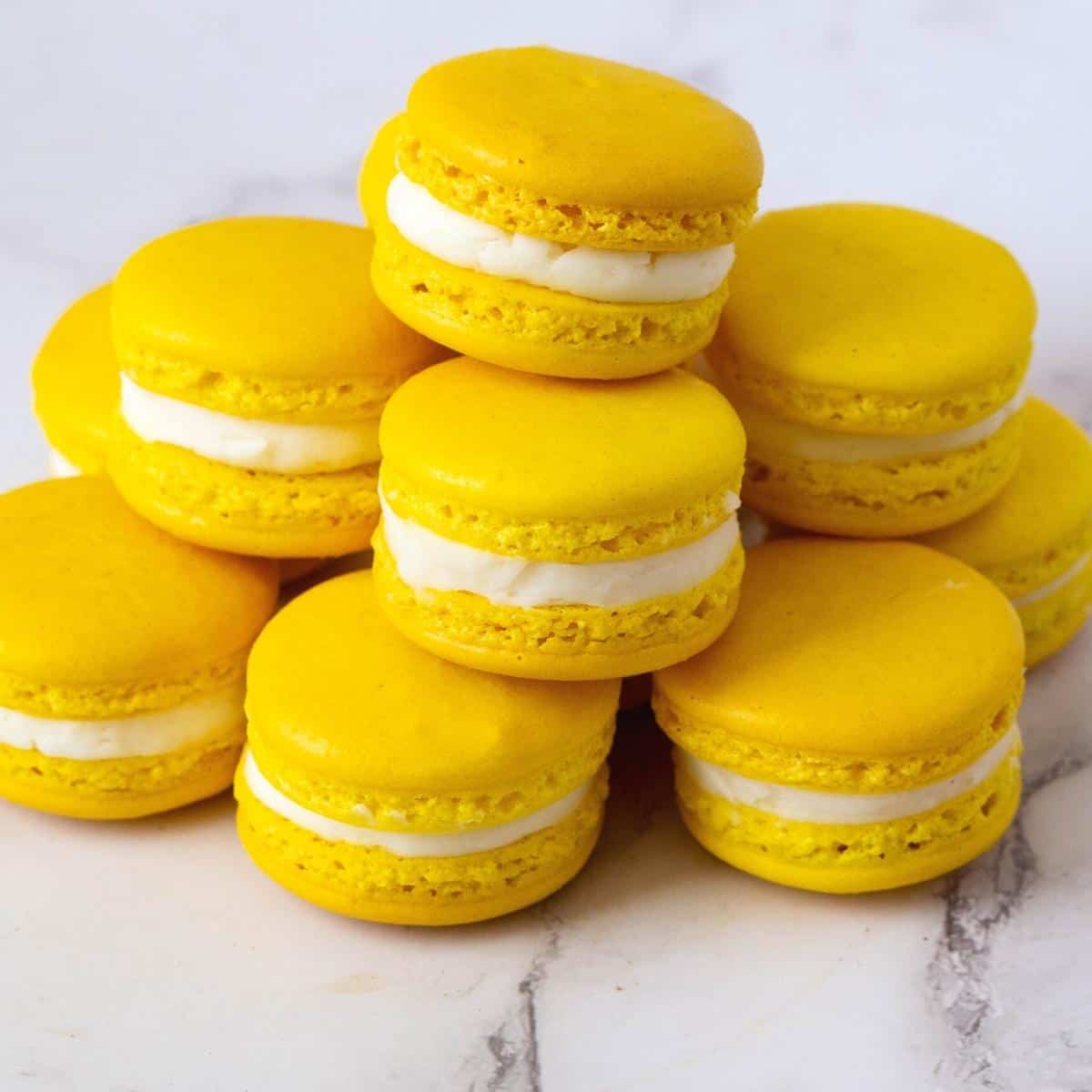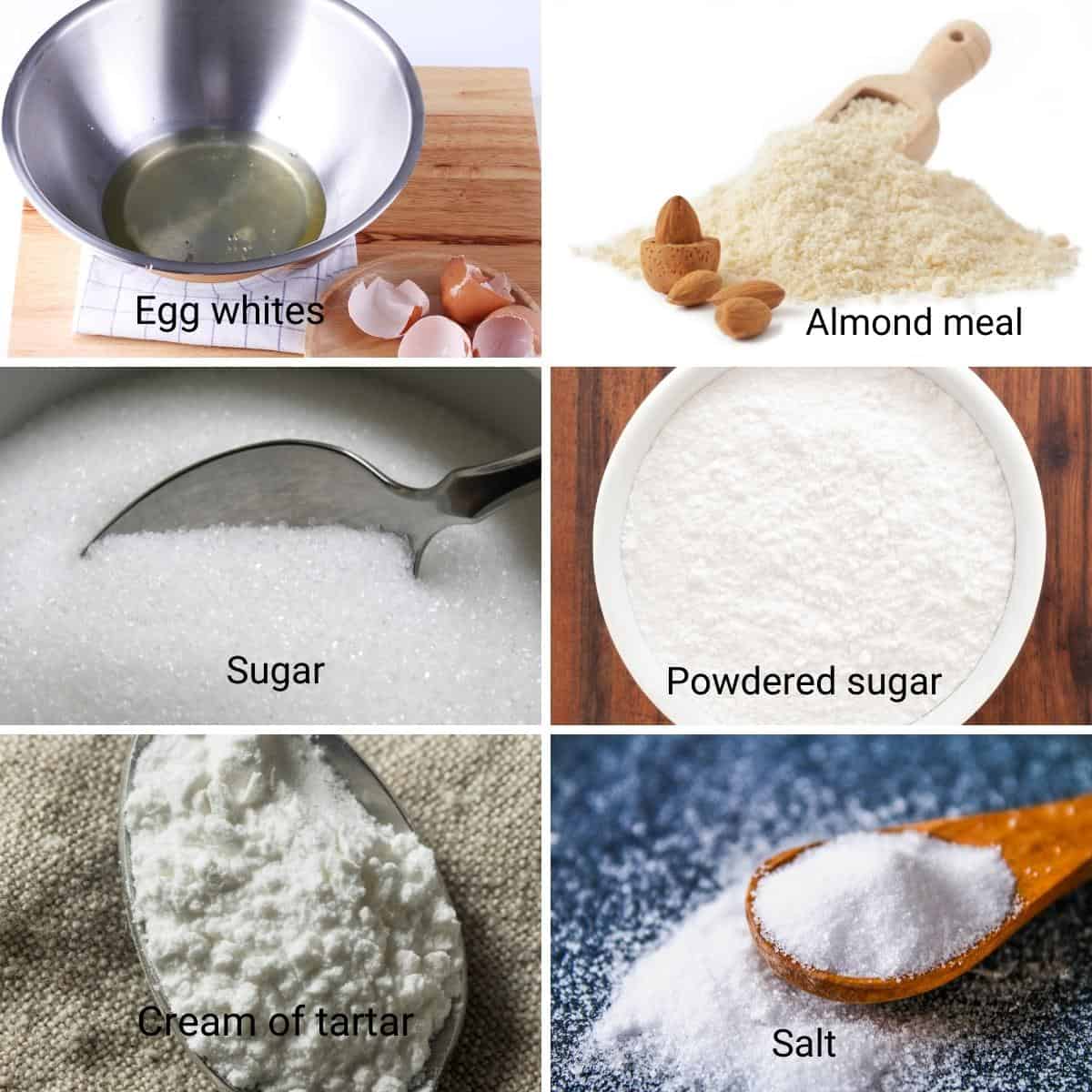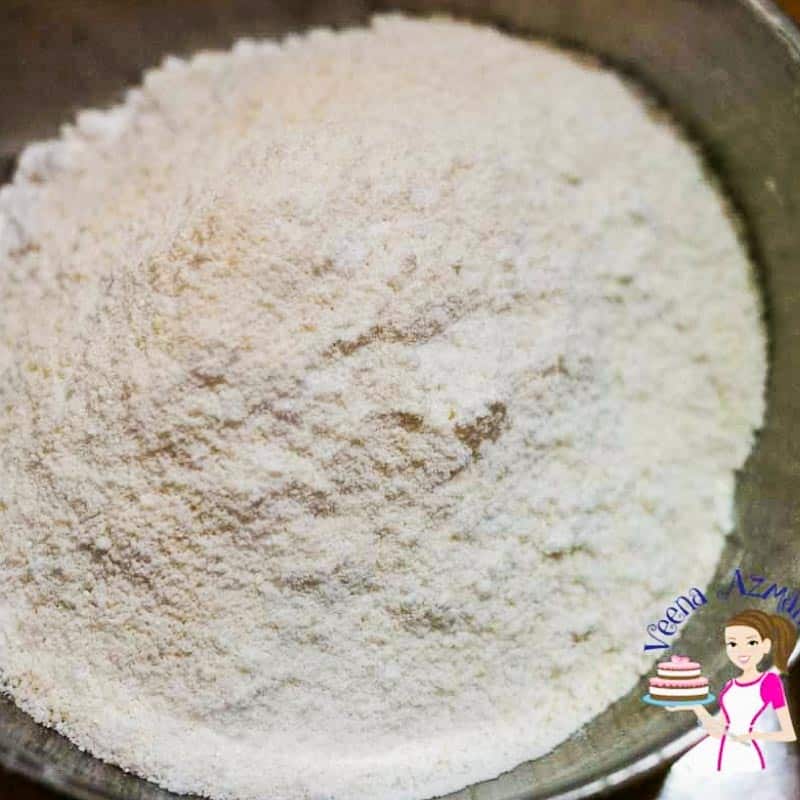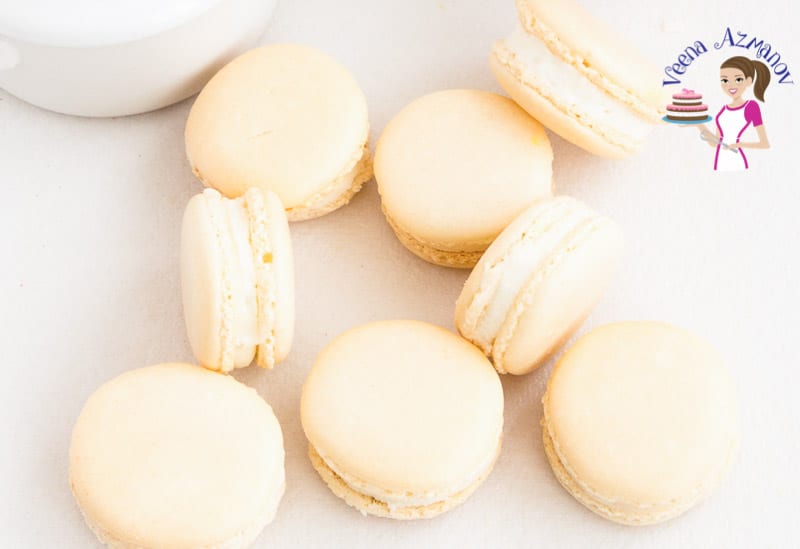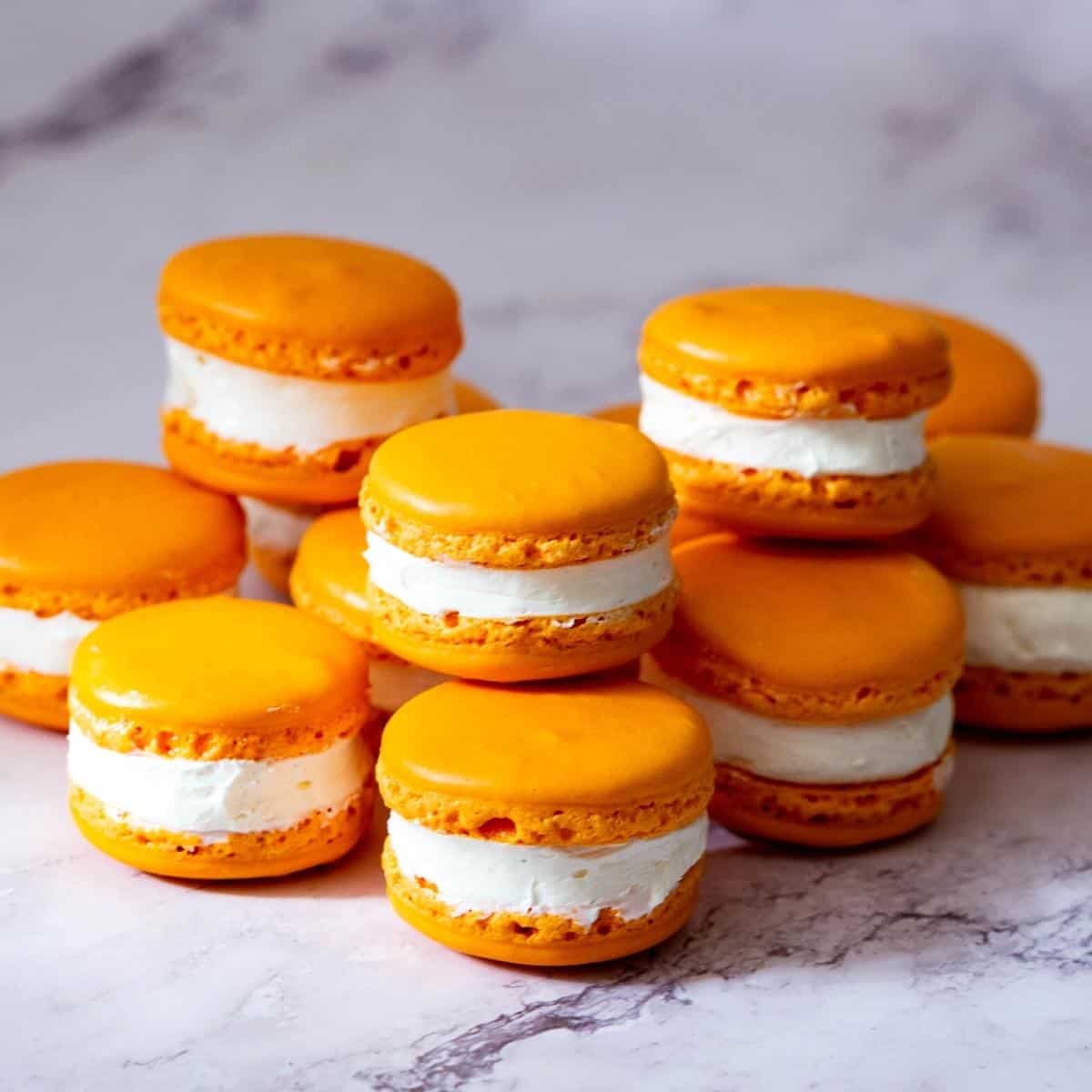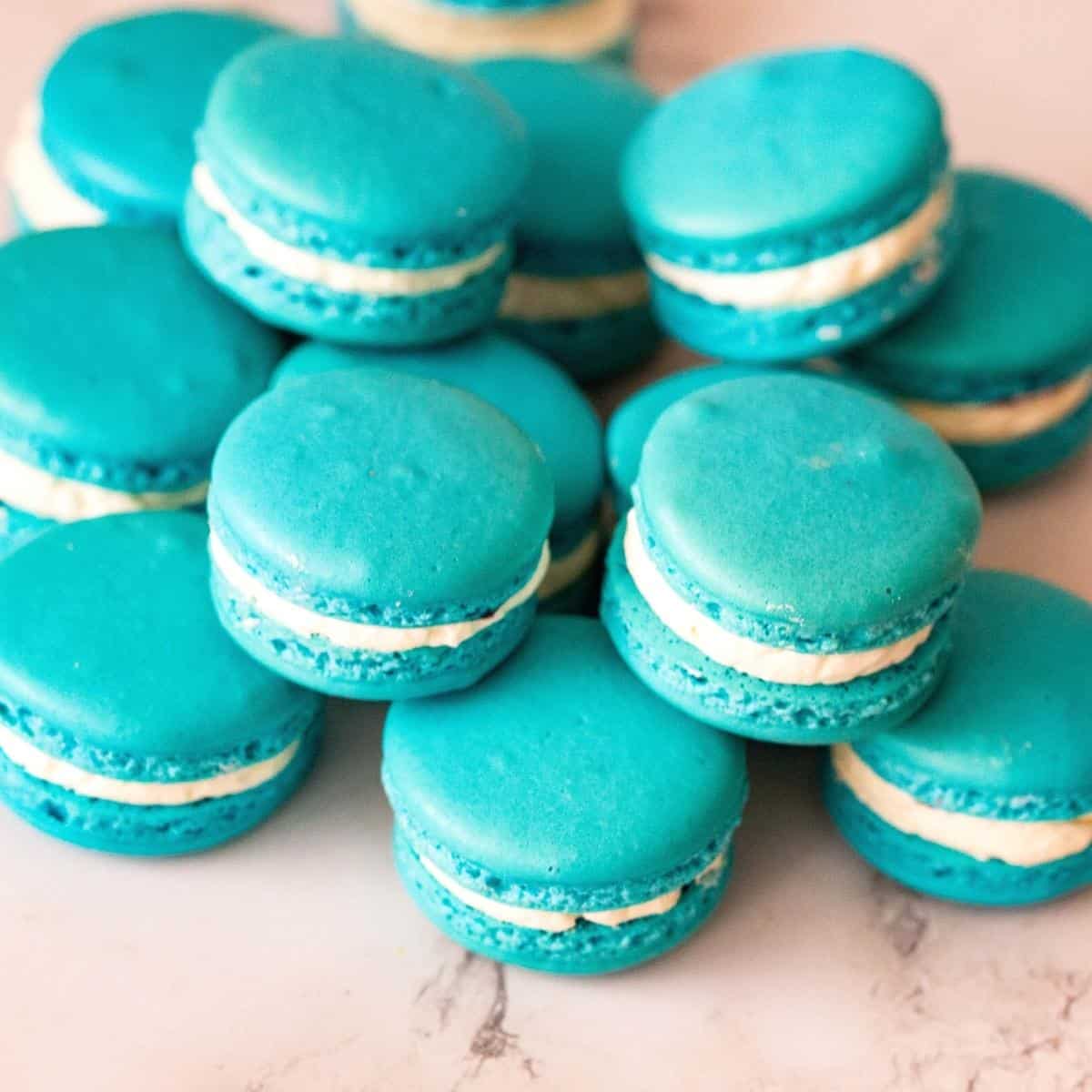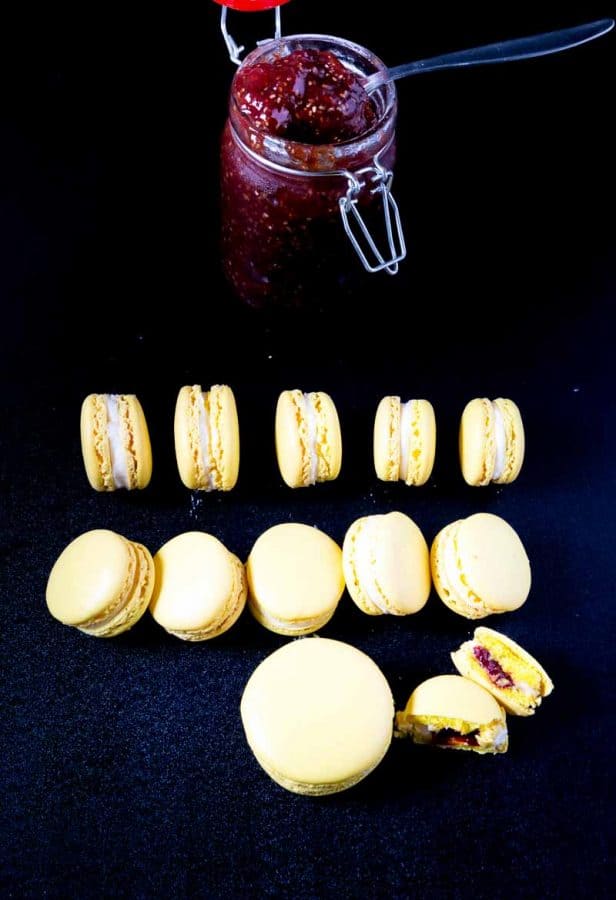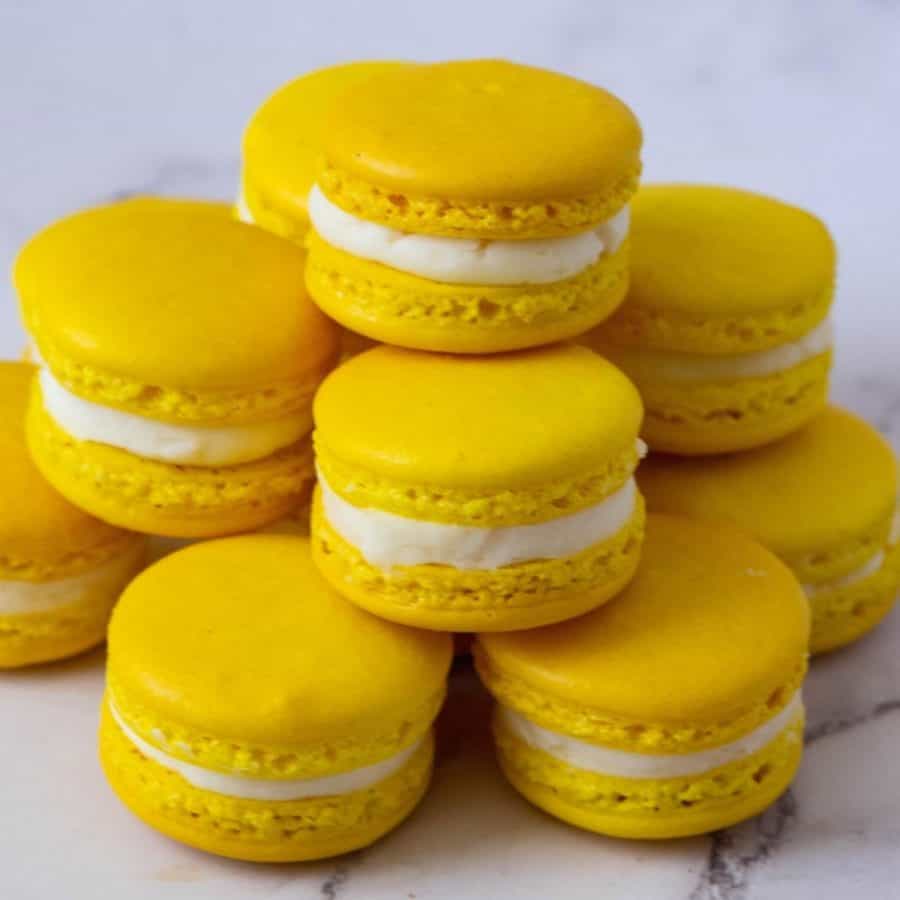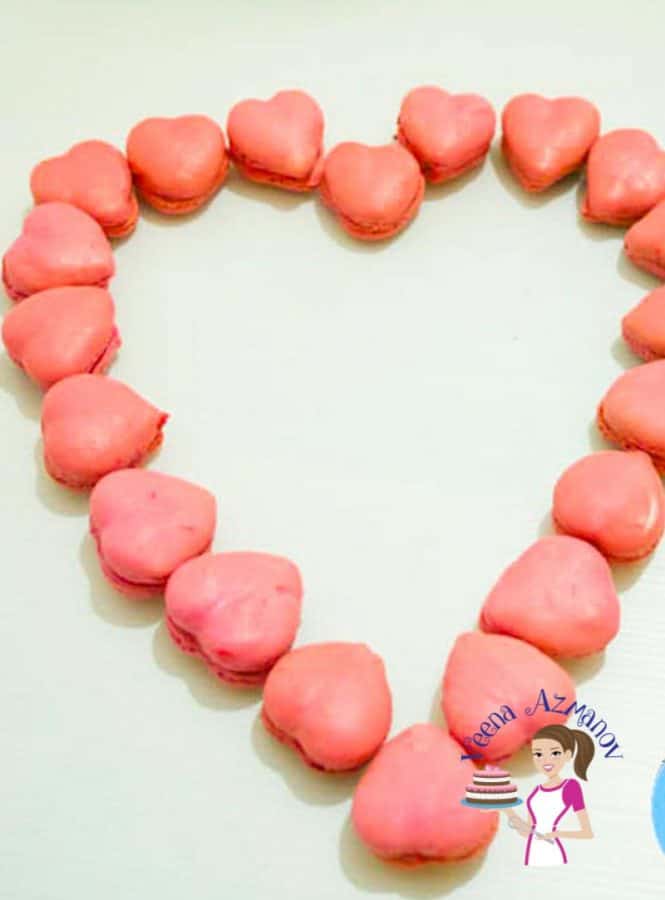Macarons are the epitome of elegance and indulgence, offering a delicate balance of crispy, chewy shells and creamy, flavorful fillings. These French confections, made from almond flour, egg whites, and sugar, are renowned for their stunning appearance and exquisite taste. With a rainbow of colors and a myriad of flavors, from classic vanilla and chocolate to delicious fruit and floral infusions, macarons are a feast for the eyes and the palate. Whether enjoyed as a delightful treat for yourself or presented as a sophisticated gift, macarons never fail to delight and impress. The word macaron is derived from the Italian word ‘macarone’ or ‘maccharone’ which actually means meringue. For years, I thought macarons were French because I associated them with the famous chef Pierre Herme. Until I purchased his book and realized all the recipes in his book use the Italian meringue method. One of my favorite books for macarons is ‘Le Petite Macaron‘ by Kathyrn Gordon and Ann E McBride. They have made all three methods, Fresh, Swiss, and Italian meringue method. Making macarons can be challenging due to their precise and finicky nature. Here are some reasons why they can be difficult to make:
Meringue consistency: Achieving the right consistency for the meringue is crucial. Over or under whipping the egg whites can result in macarons that are too dense or flat. Macaronage technique: The process of folding the almond flour and powdered sugar into the meringue (macaronage) requires a delicate balance. Undermixing can result in lumpy batter, while overmixing can lead to flat, spread-out macarons. Humidity and temperature: Macarons are sensitive to humidity and temperature. High humidity can cause issues with the macaron shells, leading to cracked or hollow macarons. Oven calibration: Proper oven calibration is essential for even baking. An oven that is too hot or too cold can result in unevenly baked macarons. Resting time: Allowing the piped macarons to rest before baking is crucial for developing the characteristic smooth top. Skipping this step can result in cracked shells. Fillings: Choosing the right filling and achieving the right consistency can also be challenging. Fillings that are too runny can make the macarons soggy, while fillings that are too thick can make them hard to bite into.
Despite these challenges, with practice and attention to detail, it is possible to master the art of making macarons and create beautiful and delicious treats.
Tools you will need
Mixer – While you can whip the eggs whites with a whisk, it is much easier to use your electric mixers such as Kitchen-Aid or K-Mix or a hand mixer. So, yes, if you have one – get it out from the back of the closet. Bowls – Ensure your bowls are grease-free! I mean no trace of any oil or butter or any food that you might have cooked in there. If you are not sure, just add a tsp of vinegar on a damp paper towel and clean the inside of the bowl.The same with your whisk or spatula or spoons – no trace of oil. Piping – A disposable piping bag makes things easy but you can use a ziplock bag- just make sure you have a nice round circle so your batter comes out round not as a triangle. Template – Always use a macaron template. You don’t need a macaron mat because you could print out a template online. Just type the word macaron template on Google and pick the size you want. Food processor – I prefer to use a good food processor of the right size if I need to grind the nuts at home. I have explained in more detail below, why you need to not just grind the nuts fine but also sieve them. But using a large food processor for just one cup of nuts might not give you the best results. I hope that makes sense.
Ingredients and substitutes
Egg whites – Always use egg whites by weight not measure. As you can see, I have said 110 grams or 3.5 oz. This is very important. Also, you can use fresh eggs but make sure they are room temperature. Almond meal (almond flour) – Whether you buy or make it at home, make sure it’s finely ground and sifted. And if you make it yourself, use blanched almonds along with some of the powdered sugar from the recipe to prevent the almond meal from becoming too greasy. Sugar – Use a fine grain sugar so it dissolves easily in the egg whites. Cream of tartar – It prevents the separation of protein and water in the whites. It’s also flavorless, so it does not affect the flavor of your baked goods. The best substitute for cream of tartar is a pinch of salt, but lemon juice and vinegar are often used. Extract – Always use an extract that’s not oil-based. If you are not sure, don’t add any extract at all. But do not use any oil-based extract in your whipped egg whites.
20 Tips for perfect Macarons Every Single Time
Can I make my own almond meal?
You can buy these commercially or make them home yourself as long as you can grind them into a dry, not oily powder. One way to ensure that is to add the powdered sugar from your recipe a little at a time when pulsing the nuts. Also, I find it is best to use them commercially purchased almond meal for the simple reason that the commercially made almond meals are made in specially designed grinders where the almond is ground very fine and yet not releasing its oil. Because an oily almond meal will flatten the macarons. Can you make Almond Meal at home – Yes!! Almond Meal is basically blanched almonds that have been ground to a fine powder. You can make it yourself but it has to be made in a food processor or coffee grinder ensuring that when you grind it does not release too much oil. One of the common causes of failed macarons is home ground almond meals. Place the almonds in a food processor or coffee grinder and pulse. Do not do a long spin as this will cause the almond oils to be released. Add a few tablespoons of confectioners sugar from your recipe to avoid the nuts from releasing their oils. Then, sift it through a strainer. Place the big bits back in the food processor or grinder until it is all a fine powder. When it comes to almond meals two things are very important – one that the almonds be finely ground and second that they are not too oily.
Step by step: No-fail Macaron Recipe
Macaron shells
Prepare baking sheets: Line baking sheets with parchment paper or silicone mats. You can also use macaron templates under the parchment paper to help with even sizing.
Prepare the dry ingredients: In a bowl, sift together the powdered sugar and almond flour to ensure there are no lumps. Set aside. Whip the egg whites: In a clean, dry bowl, beat the egg whites with a hand mixer or stand mixer until foamy. If using, add a pinch of cream of tartar. Add sugar: Gradually add the granulated sugar while continuing to beat the egg whites. Beat until stiff, glossy peaks form. Add the vanilla extract. Fold in the dry ingredients: Gently fold the sifted powdered sugar and almond flour mixture into the beaten egg whites. Add vanilla extract and continue to fold until the batter is smooth and shiny. Pipe the macarons: Transfer the batter to a piping bag fitted with a round tip. Pipe small rounds onto the prepared baking sheets, spacing them about 1 inch apart.
Rest and preheat: Let the piped macarons sit at room temperature for about 30 minutes to 1 hour or until a skin forms on the surface. Preheat the oven to 300°F (150°C). Bake: Bake the macarons in the preheated oven for about 15-18 minutes, or until they are set and firm. Remove from the oven and let them cool completely on the baking sheets.
Tips for Success
Sift dry ingredients: Sift the powdered sugar and almond flour together to ensure a smooth, lump-free batter. Stiff peaks: Beat the egg whites until they form stiff, glossy peaks. This is important for the macaron shells to have the right texture. Macaronage technique: Fold the dry ingredients into the egg whites gently and slowly to avoid deflating the mixture. The batter should be thick and flow slowly off the spatula. Resting time: Let the piped macarons sit at room temperature for about 30 minutes to 1 hour, or until a skin forms on the surface. This helps create the characteristic smooth top. Bake at low temperature: Bake the macarons at a low temperature (around 300°F or 150°C) to avoid browning and ensure even cooking. Cool completely: Allow the macaron shells to cool completely before filling to prevent the filling from melting. Use a template: Using a macaron template or guide can help ensure uniform size and shape for the shells. Fill sparingly: Don’t overfill the macarons with filling, as this can cause them to be messy and difficult to eat. Store properly: Store the assembled macarons in an airtight container in the refrigerator to allow the flavors to meld together. Bring them to room temperature before serving for the best texture and flavor.
Troubleshooting
My macarons have no feet – usually, the most common reason is that the batter is too thin due to overmixing. Getting the right consistency is important and can take a few attempts for some people My macarons are cracked on top – Most often the reason for this is that the batter was undermixed. Pockets of dry flour or unmixed lumps can cause cracks during baking. You must first fold the batter and ensure everything is well mixed before you start the macronage stage. Macarons have large holes – which usually happens when there are air pockets in the batter. Most often tapping the baking sheets will help pop them but often you may need to take a toothpick and pop them yourself. Ripples on the macarons – usually happen when the piped batter is not tapped enough to help the batter settle before crusting. Faded macarons – often baked in a very hot oven are the culprit of faded macarons. Reduce heat considerably. You can also place another baking pan on the top shelf to prevent direct heat. No feet in macarons – Thin batter consistency. You must whip the meringue until stiff peaks form, then add the dry ingredients and bring it back to the macronage consistency. Burst macaron feet – also a sign that the oven is too hot or the heat is not evenly distributed. You can place another baking tray on the top shelf or bake on two (double) baking sheets to prevent direct heat to the macarons.
Creative variations
Vanilla macarons – white or cream shells with vanilla bean buttercream and Vanilla pastry cream filling. Blueberry macarons – Blue shells with blueberry filling and Swiss Meringue buttercream Raspberry macarons – Red shells with raspberry filling and French Buttercream Strawbery macarons – Pink shells with strawberry filling or strawberry jam with Italian merinuge buttercream Lemon macarons – Yellow shells with lemon curd filling and lemon Swiss merinuge buttercream. Strawberry lemon macarons – yellow or pink shells with lemon curd and Strawberry Swiss meringue buttercream Matcha macarons – Green shells with macha cream and Italian meringue buttercream Mint macarons – green shells with mint flavored buttercream Chocolate macarons – brown shells with chocolate ganache See all my Macarons Collection here
Creative ways to serve macarons
Macaron Tower: Stack macarons in a tower formation for a stunning centerpiece at parties or events. Macaron Cake: Use macarons to decorate the top of a cake or create a cake entirely out of stacked macarons. Macaron Ice Cream Sandwiches: Sandwich a scoop of ice cream between two macaron shells for a delightful treat. Macaron Pops: Insert lollipop sticks into macarons to create macaron pops, perfect for easy serving at parties. Macaron Trifle: Layer crumbled macarons with whipped cream and fruits in a glass for a beautiful and delicious dessert. Macaron Wreath: Arrange macarons in a wreath shape and decorate with flowers or greenery for a festive display. Macaron S’mores: Use macarons instead of graham crackers in a s’mores recipe for a sophisticated twist on a classic treat. Macaron Fondue: Serve macarons with a warm chocolate or caramel sauce for dipping.
Delicious French Macarons for Every OccasionIndulge in the Delicate Flavors of Lemon MacaronsDelicious Strawberry Macarons: Recipe and Filling IdeasIrresistible Raspberry Macarons with Swiss Meringue ButtercreamValentine Heart Macarons
Frequently asked questions
Did you LIKE this recipe? Save it for later. You can find my recipes on Pinterest. Follow me on Facebook, Twitter, and Instagram.Subscribe, and I’ll send you new recipes right to your inbox. Thank you for sharing - Save for later




